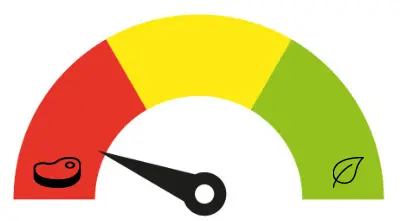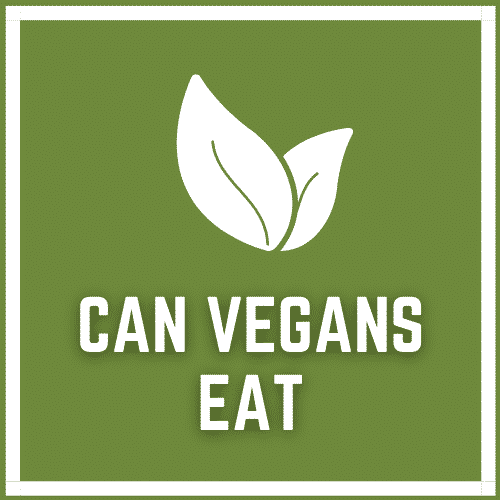Answer: No.

Wildflower honey is simply raw honey, or perhaps the purest form of honey. By definition, wildflower honey is a sugary substance produced by worker bees from the nectars of various flowers or flora of a surrounding area. To market wildflower honey, the substance is extracted from beehives and filtered through a nylon cloth which removes impurities such as honeycombs, dirt, and dead bees.
The result is pure wildflower honey which is prized for its light, fruity taste, and plentiful health benefits. However, wildflower honey isn’t vegan as it’s farmed from bees.
The main difference between wildflower honey and regular, storebought honey is purity. Wildflower honey is the purest form of honey, commonly called raw honey, while regular honey is only 1/3 organic honey and 2/3 other sugar syrups such as corn or sugar cane syrup, and it’s also heavily processed to the point that most valuable nutrients in natural honey are lost. Talk about wasteful. Yet, both variants still come from bees and are harvested from their homes.
Table of Contents
What Makes Wildflower Honey Unique
Origin
The making of wildflower honey is barely distinct or different compared to other versions, but what’s interesting about it is how bees don’t produce wildflower honey by mixing nectar from various flowers in mind. Rather, bees would visit over 2 million flowers to produce one pound of honey, and they’ll keep coming back to that same spot every day until there are no more flowers of the species to pollinate.
When this happens, bees visit other flower fields or blossoms, which may not be the same types as the previous, to harvest nectar. Back in their hive, the bees would produce honey from this new type of nectar apart from the previous variant, and now the beehive would have two distinctly flavored types of honey. They can continue to visit other types of flowers and repeat the process of production and separation.
Finally, wildflower honey is then made when the various kinds of honey in the hive are harvested and mixed. By whom you ask? Well obviously, by honey farmers or beekeepers. So in a sense, wildflower honey is made by humans, whereas the bees had an original, segregation system that categorized each type of honey they produced.
Process
This raw, wildflower honey is then filtered through a nylon mesh or cheesecloth, removing excess honeycombs, dirt, and dead bees. That’s it, and since wildflower honey isn’t pasteurized, it retains its pollen contents, along with other essential vitamins and nutrients.
Despite not going through pasteurization, wildflower honey would still last for years and years, this is because it has natural antimicrobial properties. The purpose of honey to bees is, after all, their main food source and preservative for their hive.
In truth, there’s not enough scientific evidence that says raw honey is more healthful than regular, pasteurized honey, but rather, according to Medical News Today, raw honey contains natural ingredients, bee pollen, and bee propolis, that have anti-inflammatory and anti-fungal qualities and would otherwise be lost to pasteurization.
Taste
The flavor of wildflower honey would differ from season to season and place to place, this is because different types of flowers bloom during specific seasons and places. Therefore, wildflower honey produced in Savannah would taste different from one that is produced in Charleston, even when those two areas are very close to one another.
According to a blog from Savannahbee, wildflower is “all-around” honey, because it’s more common than monofloral honey (honey produced from a single type of flower or crop), and it has no standard, definitive taste or color. Each type of wildflower honey varies from region to region and time to time.
Why Vegans Shouldn’t Have Honey
Bee honey, no matter what type there may be, is a non-vegan product, and is commonly harvested, or stolen I should say, with a lack of concern for its producers – the bees. The description of the production of honey is certainly lengthy, and perhaps most people are already aware of how honey is produced from the hives of bees as they dehydrate nectar from flowers, store the sticky substance in beeswax cells, and finally feed on the honey as their main source of nourishment.
So here, we’ll simply describe how humans harvest honey.
When attempting to harvest mature honey from the manmade hive frames of a bee colony, the farmers would always have to wear protective gear from head to toe to safeguard against the bees’ stingers. As an added precaution, most beekeepers would smoke a nest first to calm the bees. However, smoking may be prohibited during fire prevention months.
Farmers Knowingly Steal Honey
Why do beekeepers prepare all of these precautions? It’s because they know they’re stealing a precious commodity from the bees, and the bees don’t like that. Bees naturally defend their hives from intruders, and humans are such, but with the aid of a non-toxic smoker, the bees are disoriented and fail to sense each other’s alarming pheromones. Sometimes, other bees are direly fazed that they falter to the ground, especially when they don’t like the type of smoke, and are accidentally crushed underfoot.
As vegans, our philosophy is to reject all forms of animal exploitation, and compared to dairy farming, bee farming is a more serious form of exploitation. When milking cows, they may not always resist, yet this is still a form of exploitation, with bees, however, they do resist and they don’t want humans anywhere near their precious honey and home. Harvesting honey is simply forcing your way to rob bees of their food, be it excess or not, it belongs to them.
Naturally, when bees are robbed of part of their main food source, they would still need an appropriate amount to get through winter. Sugar syrups and pollen patties are common supplements, but they’re not great substitutes since they usually lack the natural nutrition and benefits bees get from real honey, and sometimes, these supplements do more harm than good for bees such as malnutrition and overswarming.
You may have heard that farmers would only take the excess honey from beehives, since bees may produce more honey than what they require. This is false since farmers purposely keep the honey supply in the hive low to force bees to be more active pollinators to make up for the loss. A form of overworking you might say, but to farmers, it’s a necessary measure to maximize profits and prevent the next point.
Farmers Prevent Bee Swarming
Bee swarming is the natural path of bees to leave an overpopulated hive and start a new one from scratch – the exiled queen and a few drones and workers. This is how bees can spread out and ensure their survivability, especially if a disease or plague broke out from the previous hive. Swarming is what allows bees to continuously thrive in particular regions where food is plentiful and the winters aren’t too harsh.
Bees can’t swarm though when the food supply is low, they wouldn’t be able to store enough fuel for the long road and start a new colony right away.
However, while swarming is good for bees, they’re not good for farmers, profit-wise. This is because once a swarm escaped a hive, the population is reduced by almost 50%, and so would the honey, along with all the profits. So most of the time, farmers would do anything to prevent swarming and keep honey production at a maximum.
According to the WikiFarmer on bee swarm control, the most common method of preventing swarming is clipping the wings of the queen, so it won’t be able to fly away to leave the hive, but what then happens is that this old queen will have to be replaced by a younger queen, so eventually, it gets killed. This is by far the easiest and most convenient way of preventing smarms, as well as the cruelest.
So instead of going through the arduous and expensive process of making a new hive to accommodate the overpopulated bees, a farmer may simply choose to re-queen or decrease the bees’ population.
Farmers Don’t Treat Queen Bees Like Queens
According to PETA UK, the use of genetic modification for bees is sadly becoming more popular to reduce undesirable traits, such as the bees’ tendency to sting and die. This is done by collecting preferred drones, crushing their heads to milk their semen, and crushing the rest of their bodies to inspect for disease-carrying bacteria or parasites. Then, they inseminate the queen using a syringe while immobilizing her with carbon dioxide inside a plastic chamber.
Once this procedure is completed and the queen is healthy enough, they ship her to other regions inside a plastic box where she may readily start laying eggs. What only matters to the importer are the newly bred larvae, and once done with the inspection of the queen, they dispose of her. Such is the life of genetically modified bees.
Conclusion
As healthy as it may be, honey isn’t made for humans, at least it shouldn’t be. Honey belongs to bees, and it’s their primary food source, replacing it with supplements and less-healthier substitutes only endanger the bees’ health and nature. Pollinating our crops and trees is more than enough of what bees do for us for free, and it’s unnecessary for us to exploit them any further.
They help produce our food, and in return, we take part of theirs, which seems very unfair. Therefore, as vegans, our part is to avoid products that contain honey, beeswax, bee propolis, and honeycomb, and instead use vegan-friendly “honey” in our sweets, tea, and perhaps cosmetics.
Such examples of vegan-friendly honey brands are:
- Vegan Honey Company
- Humble Honee
- Just Like Honey
- Blenditup
- The Single Origin Food Co.
While we aren’t affiliated with any of these honey-free brands, we do advise you to check your calories and sugar consumption as vegan “honee” are also primarily made with sugary syrups such as cane sugar, agave, corn syrup, brown rice syrup, and fructose corn syrup.

